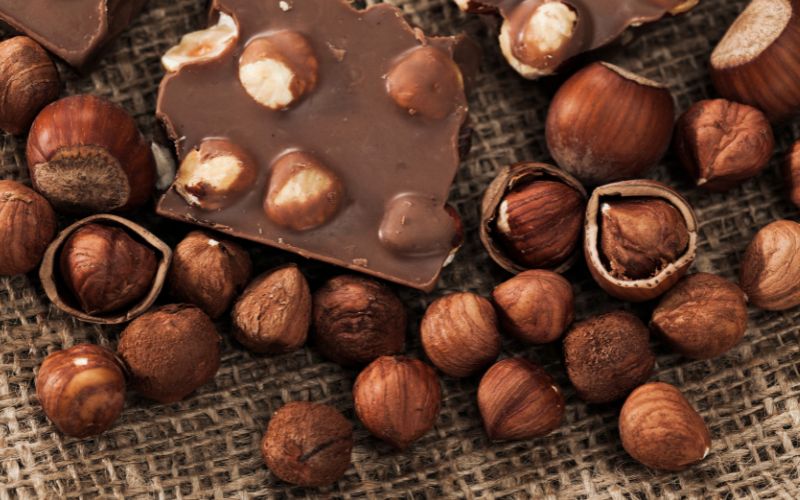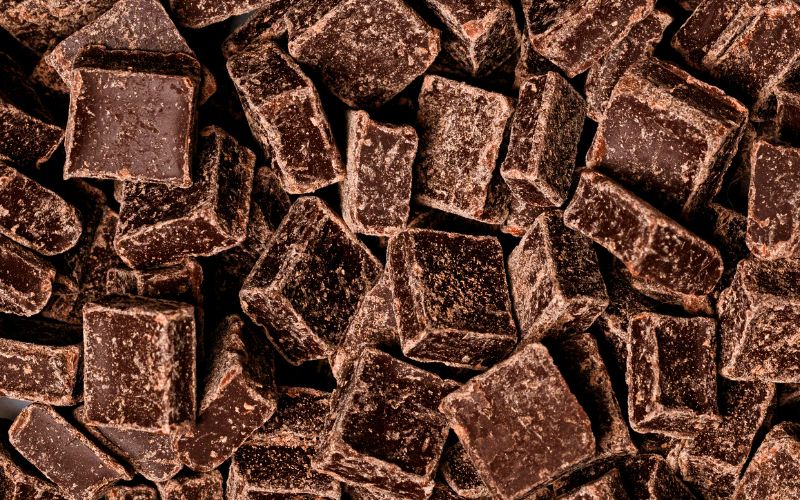Have you ever wondered about the buzz around chocolate covered espresso beans? These tiny delights are not just a sweet treat; they're packed with caffeine, offering more than just a taste sensation. In this comprehensive guide, we'll explore the "Caffeine in Chocolate Covered Espresso Beans: 3 Shocking Results You Need to Know," providing a well-rounded view of this popular snack.
What Makes Chocolate-Covered Espresso Beans Special?

It's the irresistible combination of rich chocolate and robust espresso beans that makes this snack so unique. But, have you considered the caffeine content in these bite-sized wonders? It's a key factor contributing to their popularity and effects. Each espresso bean is coated in a layer of smooth, decadent chocolate, creating a perfect balance of sweetness and bitterness. And with each bite, you not only get a burst of rich, indulgent flavor but also a jolt of caffeine to keep you going throughout the day.
The caffeine content in chocolate-covered espresso beans can vary depending on the brand and the size of the beans, but in general, you can expect each bean to contain around 5-10 milligrams of caffeine. This might not seem like much, but when you consider that a typical cup of coffee contains around 95 milligrams of caffeine, it's easy to see how snacking on a handful of these beans can add up.
For some, the caffeine content in chocolate-covered espresso beans is a major selling point. They provide a quick and convenient way to get a caffeine boost without having to brew a fresh cup of coffee or reach for an energy drink. Plus, the combination of caffeine and sugar from the chocolate can provide a quick energy boost and improve mental alertness.
However, it's important to remember that consuming too much caffeine can have negative effects, such as insomnia, nervousness, and an increased heart rate. It's always a good idea to enjoy these delicious treats in moderation and be mindful of your overall caffeine intake throughout the day.
So, next time you reach for a handful of chocolate-covered espresso beans, take a moment to appreciate the unique combination of flavors and the caffeine kick they provide. Just be sure not to overindulge, and you'll be able to fully enjoy this irresistible snack.
Caffeine 101
Let's dive into the world of caffeine. This natural stimulant is found in coffee beans, tea leaves, and even in our chocolate covered espresso beans. But what exactly does it do? Caffeine perks you up by stimulating the central nervous system, helping to ward off tiredness and keeping you alert. This little powerhouse has more to it than just giving you a wake-up call.
The First Shocking Result: Energy Boost
One of the most immediate effects of consuming chocolate covered espresso beans is the noticeable boost in energy levels. This isn't just your regular cup of joe talking. The combination of caffeine from espresso and the sugar in chocolate provides a quick and enjoyable energy surge, perfect for those mid-afternoon slumps. But here's the kicker: compared to traditional coffee, these beans offer a unique blend of flavors and textures, making your caffeine intake not just necessary, but delightful.
The Second Shocking Result: Health Benefits
Now, this might raise some eyebrows: chocolate covered espresso beans can be good for you! The antioxidants in both chocolate and espresso beans play a significant role in this. These components are known for their ability to fight free radicals in the body, potentially reducing the risk of some diseases. But remember, moderation is key; these benefits are best reaped when consumed in controlled amounts.
The Third Shocking Result: Potential Risks
As with anything, there's always another side to the coin. The potential risks associated with overconsumption of these caffeinated treats cannot be overlooked. Too much caffeine can lead to jitters, anxiety, heart palpitations, and even sleep disturbances. It's especially important for individuals with caffeine sensitivity or certain health conditions to monitor their intake.
Nutritional Breakdown of Chocolate Espresso Beans

Let's break it down: what exactly are you consuming when you pop a chocolate covered espresso bean? They typically contain calories, sugars, and, of course, caffeine. Being mindful of these nutritional aspects is crucial, especially if you're watching your diet. Portion control can help you enjoy these treats without overindulging.
The Art of Making Dark Chocolate Covered Espresso Beans
Ever wondered how these delectable treats are made? The process involves carefully roasting espresso beans and then enrobing them in layers of chocolate. But here's the fun part: you can make these at home too! It's a great way to customize the type of chocolate and the size of the beans according to your preference.
Caffeine Sensitivity and Moderation: Eat Too Many and Beware!
Understanding your body's response to caffeine is crucial. Not everyone can handle the same amount of caffeine. For some, a few chocolate covered espresso beans might be enough to feel energized, while others might need a handful. The key is moderation. Listen to your body and know your limits to enjoy these treats without any adverse effects.
Comparative Analysis with Other Caffeinated Products
When stacked up against other caffeinated products like energy drinks, chocolate covered espresso beans hold their own. They provide a natural source of caffeine, unlike some energy drinks that contain synthetic versions. Plus, the coffee vs. espresso beans debate is ongoing. While both are loved by caffeine aficionados, the compact and snackable nature of chocolate covered espresso beans makes them a unique and convenient way to get your caffeine fix.
The Role of Chocolate in Flavor and Caffeine Absorption

The chocolate in these beans isn't just there for flavor; it plays a role in how your body absorbs caffeine. The fats in chocolate can slow down the absorption rate, leading to a more gradual energy boost as opposed to the quick hit you get from a cup of black coffee. This synergy between chocolate and caffeine creates a balanced and enjoyable experience.
Consumer Testimonies and Experiences
People who love chocolate covered espresso beans are not shy about sharing their experiences. From using them as a mid-day pick-me-up to incorporating them into baking recipes, the versatility and enjoyment of these beans are widely celebrated. Some consumers have even found them helpful as a quick energy source before workouts or as a study aid during long sessions.
The Global Market for Chocolate-Covered Coffee Beans
The market for these beans is growing rapidly. With increasing interest in gourmet and artisanal foods, chocolate covered espresso beans are becoming a trendy snack. Industry insights show significant growth, with top brands and small artisanal producers alike finding success in this niche market.
Expert Opinions and Research Findings
Nutritionists and scientists have weighed in on the benefits and drawbacks of consuming chocolate covered espresso beans. While they acknowledge the health benefits of antioxidants in chocolate and coffee, they also stress the importance of moderation due to the caffeine content. Recent studies have explored everything from the antioxidant levels to the impact of caffeine on cognitive function, contributing to a deeper understanding of these treats.
Environmental Impact and Sustainable Practices
The production of chocolate covered espresso beans has an environmental footprint, like any agricultural product. Ethical sourcing of coffee beans and cocoa is a growing concern. Many brands are now focusing on sustainable practices, from fair trade sourcing to eco-friendly packaging, to minimize their environmental impact.
The Future of Chocolate Covered Espresso Beans
The future looks bright and flavorful for chocolate covered espresso beans. Innovations in flavor combinations and chocolate varieties are continually emerging. Consumer preferences are evolving towards more exotic and diverse flavors, indicating that these beans will remain a popular treat.
Conclusion
In conclusion, chocolate covered espresso beans are more than just a tasty snack. They offer a unique combination of flavor and functionality, with the added benefits and risks associated with caffeine. Whether you're looking for an energy boost, a healthful treat, or just a delicious snack, these beans have something for everyone. Remember to consume them in moderation and enjoy the richness they bring to your palate!
FAQs
How much caffeine is in chocolate covered espresso beans?
The caffeine content in chocolate covered espresso beans can vary depending on the type and size of the bean and the thickness of the chocolate coating. On average, each bean contains about 5-10 milligrams of caffeine. For context, a standard cup of coffee has about 95 milligrams.
Can chocolate covered espresso beans replace my morning coffee?
While they can provide a caffeine boost, chocolate covered espresso beans are more of a snack than a coffee substitute. They contain less caffeine than a typical cup of coffee, and the additional sugar and calories from the chocolate should be considered.
Are there health benefits to eating chocolate covered espresso beans?
Yes, there are health benefits. Both chocolate and espresso beans contain antioxidants, which are beneficial for your health. However, these benefits should be weighed against the potential risks of caffeine and sugar intake.
Who should avoid chocolate covered espresso beans?
Individuals sensitive to caffeine, those with certain medical conditions (like heart problems or anxiety disorders), pregnant women, and children should limit or avoid consuming these beans. It's always best to consult with a healthcare provider if you have concerns about caffeine.
Can I make chocolate covered espresso beans at home?
Absolutely! Making them at home allows you to control the quality of the ingredients and customize the type of chocolate. All you need are espresso beans, your choice of chocolate for melting, and a bit of patience for the coating process.
How should I store chocolate covered espresso beans?
To maintain their freshness and flavor, store them in an airtight container in a cool, dry place. They don't necessarily need to be refrigerated, but keeping them away from heat and light will prevent melting and preserve their taste.



